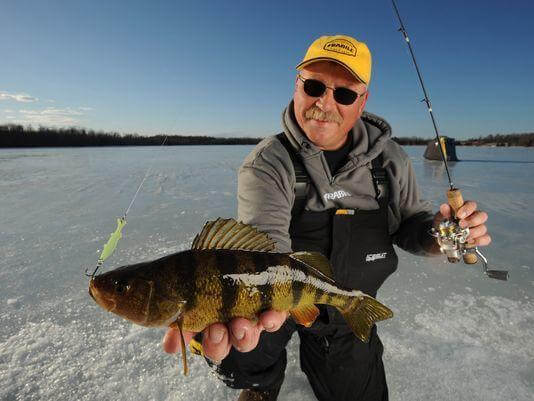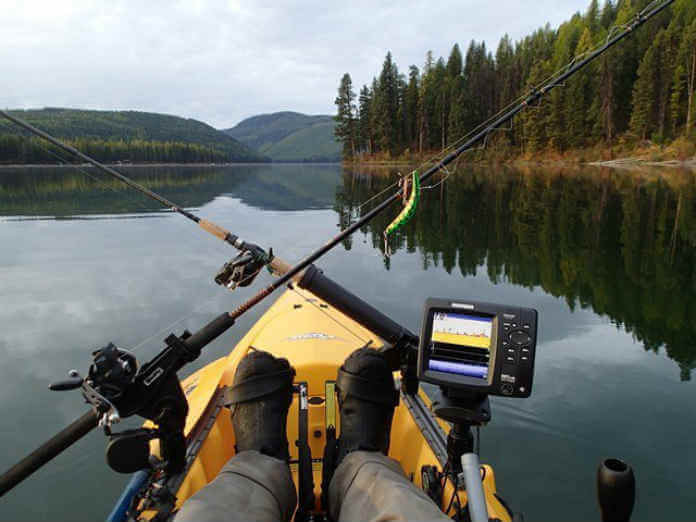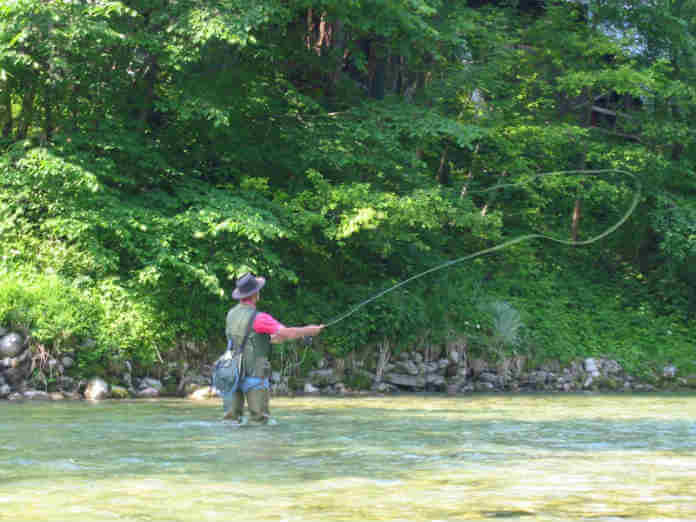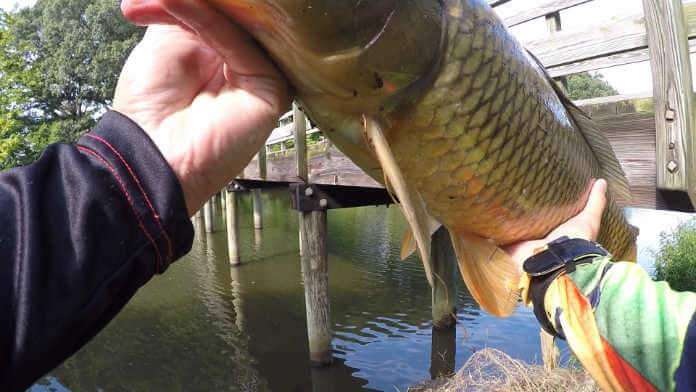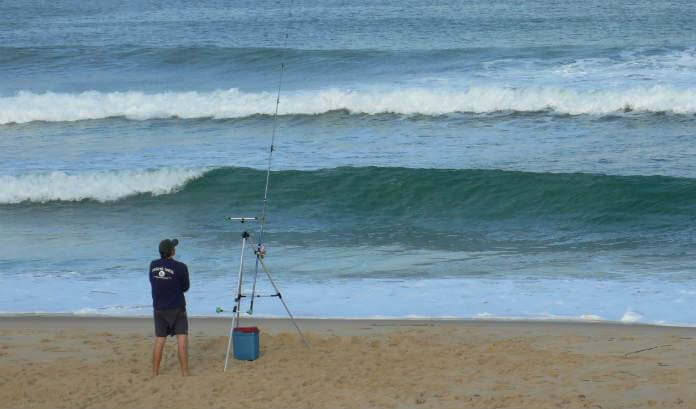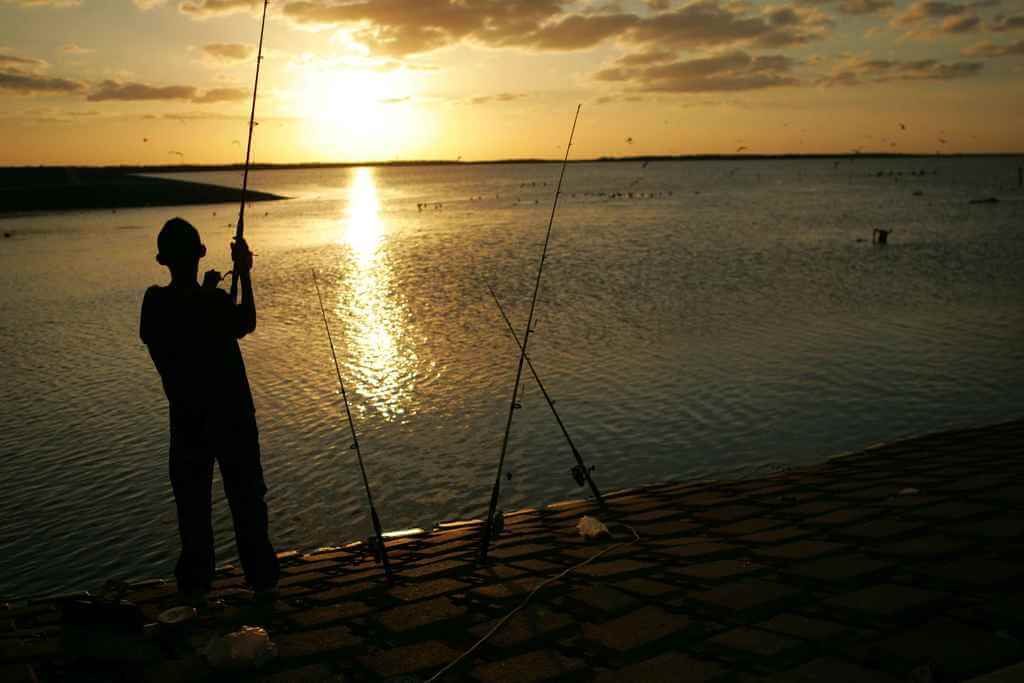During the off-peak fishing season and weather change over seasons, your equipment becomes rusty and old. You do not want to have strangled lines in your fishing reel. To catch your fish ideally and surely, you need to change your lines from time to time. Listed below are steps on how to spool a new fishing line into your reel.
Every angler has their way of how spool their fishing reel properly. Every person has their tricks and hacks on perfectly, spilling a fishing line into a reel. Although there may be a slight difference in each way, all the essential steps and details are relatively similar.
There are three kinds of commonly used fishing reels: the Spinning Reel, Spin-casting Reel, and Bait-casting Reel. Most anglers often go for the Spinning Reel as their trusted fishing reel. It is the most effective reel among the three.
Check Current Sales On Fishing Reels
Spooling your line into your fishing reel is very important. You do not want a tangled-up fishing line when you go out to cast for fish. It will be chaos for your fishing trip. So, make sure to properly tie and spool your line into your reel to have the perfect casting experience.
THE DIFFERENCES AMONG THE REELS
These three differ in functionality but share the same goal of catching some fish. To answer the question, “Which line is better?” would be a waste of time to process. Each of them has their unique features and share an equal amount of pros and cons.
See what Reel Suits your Needs
The Spinning Reel is the most versatile reel among the three. It is also the most user-friendly type of reel. Even a beginner can easily understand and adapt to this fishing reel. Different models are available nowadays, providing a bigger advantage for anglers with higher fishing standards. It is easy to cast, has great casting distance, and creates backlashes rarely. Popularly and best used for smaller baits and lighter lines.
The Spin-casting Reel is a good choice for starters who just began fishing. It is comparatively cheap among the other two. It provides an easy build and style, which makes it appropriate for beginners. Although, it is found to be not that trustworthy when it comes to its durability. It occasionally tears apart the line. But all in all, it is a good catch to those who want to start off simple and easy. Baitcasting Reel is probably the most advanced and high-end reel among all of them. It has quite a clean record when it comes to having no line twists. This offers great haul power and an excellent drag system. The Bait-casting Reel is best used for targeting larger fishes and using bigger lures. Although it might be expensive, it still guarantees a high-quality performance.
HOW TO SPOOL INTO YOUR REELS
SPINNING REEL
The first thing is. First, you should determine the appropriate size of the fishing line to match the size of the fishing reel itself. For example, heavier monofilament and fluorocarbon lines do not work well with spinning reels because of the size of the line that will cause a jump off the spinning reel when casting.
How to do it:
-
-
- First, always check the label at the back of your reel to determine what type of pound test line you will be using for casting.
- Next, you will be doing the next thing to lay your fishing rod and reel flat on the floor.
- Next, you have to open the bail. That should be the small wire arm located on the reel that flips up and down. Wherein up indicates open and down. Otherwise, it means close.
- Remember to open your bail because you will not wind your line into your reel if you do not. Always do this before attaching your line.
- Take note of the directions of both your bail and your spool. This is very important to minimize line tangling and twisting.
- If your bail rotates clockwise, then also make sure that the line coming off your spool is in the same direction as well.
- Run your fishing line on the first guide of your fishing rod.
- Attach your fishing line to your reel.
- The first thing you will be doing is to tie a regular overhand knot at the free end of your line.
- Hold the free end of your line and the mainline to wrap it around your spool. From there, take the end of your line and tie another overhand knot to its mainline. This time, tie it twice. Make sure that the first not is found outside of the two knots.
- Pull the main line slightly to secure a snugged-up fishing line into the spool. Your goal is to make sure that the fishing line is tightly wrapped around your spool.
- Cut the excess line, which should be the line closest to your second line up to its free end part. This is to ensure that no line intertwines with each other as you reel your line in.
-
Time to Spool
-
-
- Place your spool flat on the ground with its label facing up. Just make sure to remember that both the spool and the bale should go in the same direction.
- Hold the line with please hold an amount of pressure to it, then slowly reel in the line.
- Fill the reel but leave it with 1/8 inch of space. This is to refrain the line from jumping off of the reel.
-
SPIN CASTING REEL (CLOSED-FACE REEL)
The same thing goes with the Spinning Reel. First, you have to make sure that you will be using the appropriate line for the reel. Make sure that you are putting the correct pound-test line on your reel. You can see how much your reel's capacity is by flipping it in the back. A label should indicate how long and how heavy it can spool.
How to do it:
-
-
- To get started, remove the front cone of your reel by twisting it clockwise. You can be able to tell if you are doing it properly if the cone begins losing up.
- Next, take all the remaining line that is left inside your reel. Once finished, you are now ready to attach a new spooling line into your closed-face reel.
- The next thing you have to do is to run the line on the guides of your fishing rod, from tip to the handle.
- Now grab the end of the inserted fishing line and run it through to the front hole of your cone. You can put the cone down for a while as you do these next steps.
- Now, tie the end of your line into a simple overhand knot. This is to attach your line to your reel. Do this only one time.
- Next, grab the tied end of your line and wrap it around your reel only once. Then you will knot, using the tied end of the line hooked its main body, do it twice this time. Take note that you have to make sure that your first knot stays outside your second knot.
- Tighten the knots by pulling the mainline that is connected to guides until the line snugs inside the fishing reel.
-
Time to Spool
-
-
- So now, you have attached your line to your reel. The next step is to screw back your front cone to where it was attached a while ago.
- The important thing to remember in this step is to attach your front cone, and your line should remain tight and straightened. To do this, apply pressure and hold your line tightly as you re-screw back your front cone.
- Now, you are ready to spool your line. Do not let go of your line. Instead, continually apply pressure while you are holding it. Then, slowly begin to wind your reel.
- Ensure to leave a 1/8 inch of space on your reel to prevent the line from jumping off. This is to ensure no tangling moments will happen as you cast your line.
- So now, you have attached your line to your reel. The next step is to screw back your front cone to where it was attached a while ago.
-
BAIT-CASTING REEL
This simple fishing reel spools a fishing line among the three. It is as simple as inserting a thread into a huge sewing needle.
To spool those in the way listed here, you must first prepare three essential things. A long-neck screwdriver or a pencil will do, pliers or scissors (make sure it can cut through the wire), and a small cardboard box.
You can exclude using the box if you have a friend to help you along with this. But, if otherwise, a cardboard box will be just fine to help you with spooling later.
How to do it:
-
-
- What you need to do is to set up your fishing line in the cardboard box. Start with poking the screwdriver or pencil on one side of your cardboard box.
- Then, insert the screwdriver or pencil into the whole of your fishing line. Lastly, poke the screwdriver or pencil again at the other side of the box. This will serve as leverage to your fishing line when you spool it later.
- If you have a friend with you, let them hold the screwdriver or pencil at each end of it.
- Now, you are going to place the fishing line into your reel. Before putting in the new line, make sure to remove the old one first.
- Once the old line is removed, begin by holding the free end of the new fishing line and inserting it into the first guide of the fishing rod. Pull it as you insert it at the guard of the fishing reel as well.
- Tie the line around the reel with an overhand knot. This is the same thing as what we did when using a Spinning Reel.
- If the kind of reel you have has holes in its spool, you can insert the free end of the line at one of the holes. Rotate the reel into one full crank, and that should knot up your line.
- Remember that you are aiming for in this process to tie in the city and securely on your reel simply. So, it should not come off or loosen as you spool later.
- Cut off the excess line using your pliers or scissors.
-
Time to Spool
-
-
- Start reeling in the line slowly. To do that, put light pressure on the mainline using only one finger.
- As you do that, continue to reel in slowly. You will observe that you can spool the fishing line neatly and consistently upon applying light pressure on the line.
- Continue to spool until you have reached the amount of line that you desire. Once satisfied with the amount of line you have, cut the line in the part where the first guide of your rod is located.
-
You have now replaced your old line with a new roll of fishing line. You are now ready to catch some fish.










